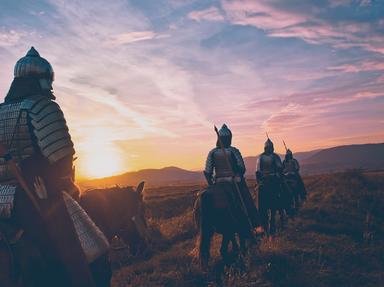Quiz Answer Key and Fun Facts
1. Who was the first Egyptian pharaoh whose tomb was found intact?
2. The United Kingdom came into being when which two countries merged their parliaments?
3. Abraham Lincoln was born in Kentucky, but moved to Illinois at a young age, and considered that state his home. Lincoln is famous for having "freed the slaves." What was the status of slavery in Illinois?
4. The winter of 1777-78 was probably the lowest ebb of the Revolutionary War for the American forces. The Continental Army spent the winter at Valley Forge, Pennsylvania, and somewhere between 2,000 and 2,500 troops died of hunger, disease and exposure. What describes George Washington's situation at Valley Forge?
5. William Shakespeare and Miguel de Cervantes died on the same day.
6. Sticking with Shakespeare for the moment, how would one describe Shakespeare's vocabulary?
7. Who condemned Joan of Arc and burned her at the stake?
8. Most of us remember the 1936 Berlin Summer Olympics because the African-American athlete Jesse Owens won four gold medals. Which of the following statements about the Games is true?
9. The Battle of New Orleans was one of the most important battles of the War of 1812. Only one of the choices that follows is true. Which one?
10. Following the Great Fire of Rome in 64 AD, approximately how many Christians is Nero thought to have thrown to the lions in the Colosseum?
Source: Author
daver852
This quiz was reviewed by FunTrivia editor
bloomsby before going online.
Any errors found in FunTrivia content are routinely corrected through our feedback system.

